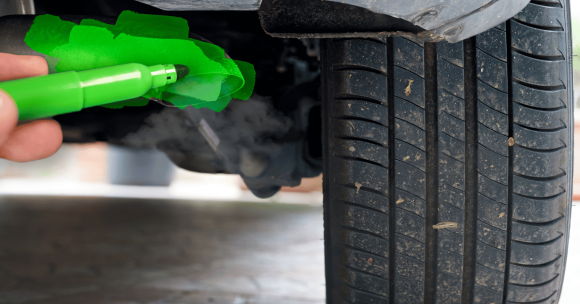Greenwashing – it’s the sustainability equivalent of crying wolf. There are, however, several traps to fall into, without even realizing it.
A 2023 study by the Australian Competition & Consumer Commission (ACCC) found that more than half (57%) of Australian brands were making dubious environmental claims.
Greenwashing traps businesses should avoid
Small, seemingly innocent details could unintentionally trip you up, or worse, cause damage to your company’s reputation.
The same ACCC study reminds businesses to be honest and transparent when making environmental or sustainability claims so consumers are not being misled.
Let’s take a look at six greenwashing traps to avoid.
Using fuzzy terminology to greenwash
Eco-friendly. Sustainable. Green – these buzzwords are everywhere.
It might sound good, but these phrases are about as specific as saying your product is “nice.” Regulators are savvy now and cracking down on broad terms that don’t really mean anything.
Pro tip: Take a page from B-Corp Bellroy’s book. Instead of vague “eco” claims, they explain exactly what makes their products sustainable, right down to the fabric composition.
Avoid this trap by eliminating even the possibility of doubt or ambiguity. This is not the time for a “more is less” mantra.
Spell out exactly what makes your product sustainable. Provide as much detail as possible.
Misleading greenwashing visuals
Choose your marketing and product visuals carefully.
We’ve all heard that a picture is worth a thousand words. But in the world of green marketing, it could also be worth thousands in fines.
A photo of flowers blooming from an exhaust pipe might be artsy and Insta-worthy while also creating expectations your product probably would not live up to.
Even the color palette you choose can land you in hot water. H&M was taken to court for using green labels on products that weren’t sustainable.
The ‘So what? Dilemma
Th “so what?” dilemma happens when a brand makes environmental claims that, while true, are insignificant or unrelated to their product.
For instance, a cleaning product might be guilty of greenwashing when the company boasts about being ‘CFC-free’ when CFCs have been banned for decades.
Another much more obvious greenwashing example is Amazon’s climate pledge.
In 2019, Amazon said it would invest in 120,000 electric vehicles by 2030. It sounds impressive, but that figure covers less than a third of the retail giant’s projected delivery needs.
Avoid this trap by focusing on environmental improvements that are relevant to your product and industry. Your sustainability claims should add real value, not merely stating the obvious or the legally required minimums.
Green logistics: Partial truths, half lies
This happens when a brand focuses on the environmental-friendly aspect of one product while ignoring other potentially harmful impacts.
A company might promote its product’s recyclable packaging but fail to mention the high energy consumption or water pollution involved in its production.
Amazon provides another clear example of this. While claiming to work towards net zero emissions, Amazon also supports oil and gas extraction.
Avoid this greenwashing trap by conducting a thorough life cycle assessment of your products. Be transparent about all environmental impacts, regardless of whether it’s positive or negative.
Being overly optimistic
Regulators know that sustainability is a journey, not a destination. Honesty isn’t just the best policy in this regard, it’s the only policy.
Be honest about your company’s progress and challenges rather than painting an unrealistically rosy picture.
Bonds nails this approach. They’re upfront about their journey away from single-use plastics, acknowledging both successes and setbacks.
Avoid this trap by embracing both the ups and downs. If you missed a target, explain why and what you’ve learned, instead of trying to cover it up or finding loopholes through it.
Like Volkswagen, when it cheated emissions tests by fitting vehicles with a ‘defect’ device and software to detect when it was undergoing an emissions test. The device then altered the performance to reduce the emissions level.
Doing more harm than good
Six years ago, Starbucks released a ‘straw-less lid’. It was part of an initiative to combat the use of plastic straws – a noble goal.
However, the new lid contained more plastic than the old lid and straw combination. The company also claimed it was made of polypropylene.
While polypropylene is recyclable, climate critics pointed out that only 9% of the world’s plastic is recycled
Avoid this trap by considering the full lifecycle of your products. Stating it is ‘recyclable’ looks good on paper, but what about production energy and transportation emissions?
Instead of quick fixes, focus instead on solutions that address the root of the problem. For example, Starbucks could have considered reusable cup programs or used 100% biodegradable materials.
NOW READ: Decarbonization: Next 3 years crucial for net-zero success – experts reveal
About the author
Cheryl has contributed to various international publications, with a fervor for data and technology. She explores the intersection of emerging tech trends with logistics, focusing on how digital innovations are reshaping industries on a global scale. When she's not dissecting the latest developments in AI-driven innovation and digital solutions, Cheryl can be found gaming, kickboxing, or navigating the novel niches of consumer gadgetry.











